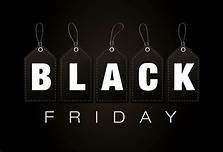Black Friday

November 21, 2019
The first recorded use of the term “Black Friday” was applied not to holiday shopping, but to financial crisis –specifically, the crash of the U.S. gold market on September 24, 1869. On that Friday in September, the stock market went into free-fall and bankrupted everyone from Wall Street barons to farmers.
By 1961, “Black Friday” had become a term used in Philadelphia for the day-after-Thanksgiving shopping sprees so many Philadelphians participated in. The term caught on to the extent that the city’s merchants and boosters tried unsuccessfully to change it to “Big Friday” to remove the negative connotations. It didn’t work.
The term Black Friday didn’t spread to the rest of the country until much later. Sometime in the late 1980s, retailers found a way to reinvent Black Friday and turn it into something that reflected positively, rather than negatively, on them and their customers.
The day after Thanksgiving marked the occasion when America’s stores finally turned a profit — made it “into the black.” Stores started opening earlier and earlier on that Friday, and now the most dedicated shoppers can head out right after their Thanksgiving meal.
Since then, the one-day sales bonanza has morphed into a four-day event and spawned other “retail holidays” such as Small Business Saturday/Sunday and Cyber Monday. An estimated 135.8 million Americans plan to shop over the Thanksgiving weekend.
According to thebalance.com, sales will be up 4.1 % and shoppers can expect to spend $1,007.24 each on gifts, food, seasonal decorations, and greeting cards. In 2018, $715.5 billion dollars was spent on Black Friday shopping.
Black Friday is one of the most popular days of the year for shopping and getting good deals. Black Friday is a competitive time of the year, so if you are planning on hitting the retail brick and mortar shops on this chaotic day, stay safe and catch those deals.


